Black Hole Measured By ALMA: Visualizing 140 Million Suns
Researchers at SOKENDAI measure the supermassive black hole inside the barred spiral galaxy NGC 1097 with ALMA. Inside they've found a mass equivalent to 140 million times our own Sun. Two bits of information are stunning about this particular bit of research. First, that they were able to measure a black hole with the tools they've got onhand. Second, that they were able to calculate the results of this study in just under two hours, leading the way to greater studies inside the capacities of ALMA.
The reason this study was done was to gain a greater understanding of how black holes contribute to the creation of galaxies. Supermassive Black Holes in particular are believed to have co-evolved with galaxies, making mass "an important parameter in understanding their relation in the context of galaxy evolution," according to the study.
ABOVE: "Central region of NGC 1097 observed with ALMA. The distribution of hydrogen cyanide (HCN) is indicated in red and formyl cation (HCO+) in green, and synthesized with an optical image taken by the Hubble Space Telescope." Credit: ALMA (ESO/NAOJ/NRAO), K. Onishi, NASA/ESA Hubble Space Telescope
This research team was headed by Kyoko Onishi, doctoral student at the SOKENDAI (The Graduate University for Advanced Studies).
"We could obtain the kinematics data of the central molecular gas in NGC 1097 within a two-hour ALMA observation," said Onishi.
"To reveal the relation between the SMBH and the host galaxy, we need to derive more SMBH masses in various types of galaxies. ALMA will enable us to observe a large number of galaxies in a practical length of time."

ABOVE: "Velocity of the HCN gas is shown in the color. Red indicates gas is moving away from us while blue is coming closer to us." Credit: ALMA (ESO/NAOJ/NRAO), K. Onishi, NASA/ESA Hubble Space Telescope
Imagine being able to weigh a significant cross-section of the universe, galaxy by galaxy, inside our lifetimes. That's a goal that's now in reach.
The imagery you see below was created using bits and pieces of a Morn1415 video created about black holes back in 2014. What you're seeing here is, first, just one of our own friendly Sun.
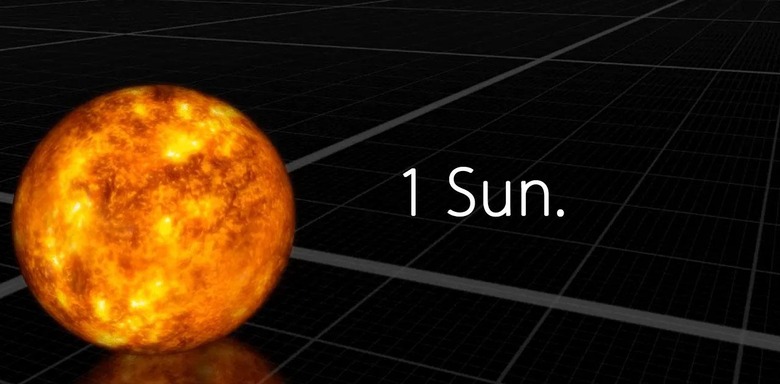
Above you'll see just one sun. This is our sun, the one nearest our planet Earth. Below you'll see this sun begin to multiply. Imagine the mass.
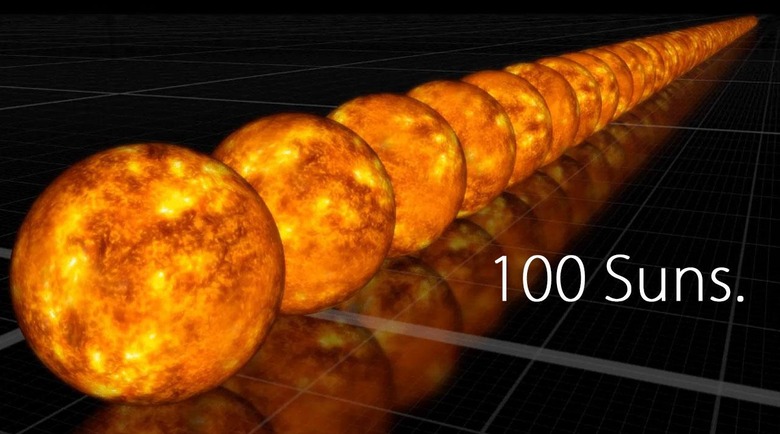
Multiplied again.
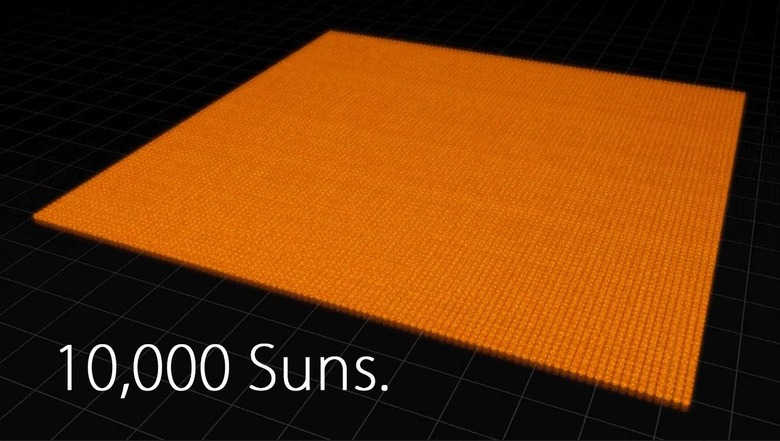
And again – going cubical!
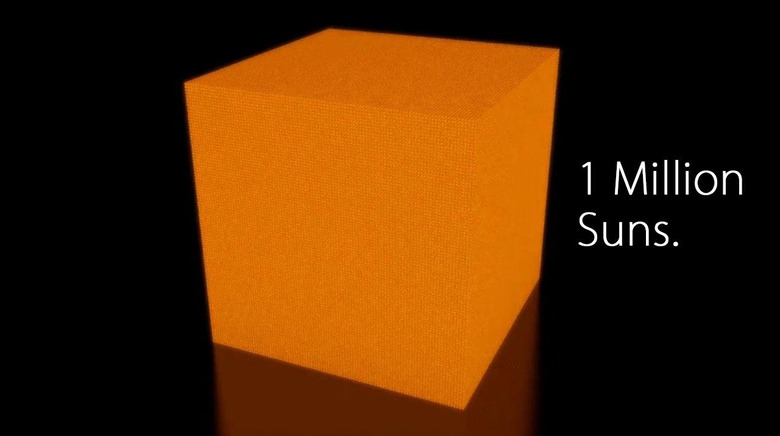
And finally, once again.
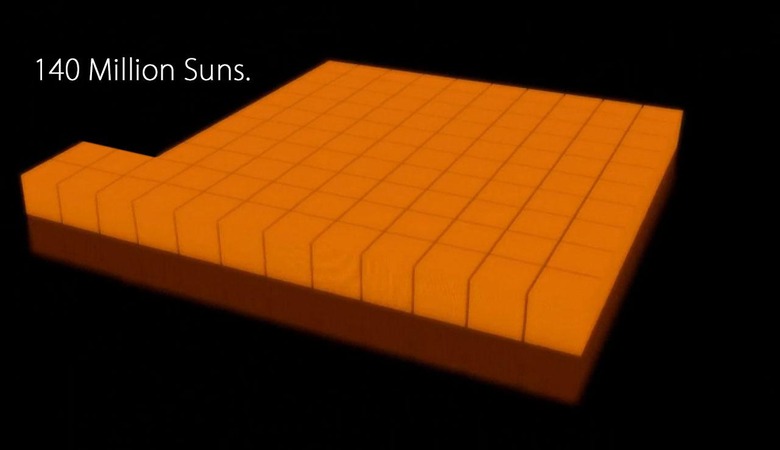
The supermassive black hole we're talking about today has more mass than 140 million of our own sun. That's pretty big, but it isn't the largest black hole ever discovered – it's only the most recently measured!
See the video below by Morn1415 to experience the true nature of the supermassive black hole's potential size. Bigger than you could possibly imagine.
You can learn more about the research used in this article in the paper "A MEASUREMENT OF THE BLACK HOLE MASS IN NGC 1097 USING ALMA" in The Astrophysical Journal under code doi:10.1088/0004-637X/806/1/39. Authors of this research include: Kyoko Onishi (SOKENDAI), Satoru Iguchi (National Astronomical Observatory of Japan/ SOKENDAI), Kartik Sheth (U.S. National Radio Astronomy Observatory), and Kotaro Kohno (The University of Tokyo).
